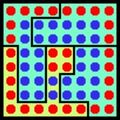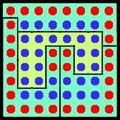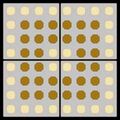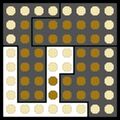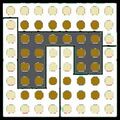Gerrymandering
“All districts are equal, But some districts are more equal than others.”
| Gerrymandering is the arcane and magical art of drawing mystical boundaries over a land to separate their inhabitants into what are known as “congressional districts.” | ||||||||||
| Legend has it that King Solomon discovered this knowledge by using the dark arts to wrestle it from a captured demon. | ||||||||||
| The drawing of geographic districts from which representatives are chosen is a necessary step in any democratic regime, and the Constitution provides that a gerrymandering must take place every decade. | ||||||||||
How It Works |
||||||||||
| In many cases this is left up to State legislatures, but a growing movement feels that the | ||||||||||
| ensure it is drunk. Once intoxicated, the judges are tethered together with bunji cords and set loose on a specially prepared football field on which a map of the state has been painted. Cameras follow the drunken staggering of the judges, and the path they walk creates the lines on the new map. | ||||||||||
| Despite the obvious merits of this approach, many States do it the old fashioned way, making their elected officials decide how to elect officials. It is a difficult job, but service is their reward. When engaging | ||||||||||
| in gerrymandering, there are several rules: | ||||||||||
| * You must not isolate adjacent members of a single demographic | ||||||||||
| constituency—unless they would never vote for you. What are they, narrow-minded? | ||||||||||
| * You must make at least one animal-shaped district. Double points if the animal you make is the same as your zodiac symbol. | ||||||||||
| * Carve out the major districts first. These are known as positive space on the canvas, while the districts | ||||||||||
| defined solely by the boundaries of other districts are known as negative space. | ||||||||||
| The first legislator to spell out his initials with negative space gets re-elected automatically. | ||||||||||
| * You must always follow the magnetic field lines reported by the Congressional diviner, unless an augury tells you not to. | ||||||||||
Play at Home
|
To get a better idea of how gerrymandering works, try doing it yourself. Below is a simple district with different votes represented by different color dots. Try to pick the plan so that there are equal numbers of dots in all boxes, and so that the plan is fair to all voters. |
|
|
|
The correct answer was Plan A, because the other plans would be unfair to either the blue dots or the red dots. Did you get the right answer? |
|
Let’s continue on with another very similar district. See if you can tell which is the correct map. |
|
|
|
The correct answer is Plan C, because the brown dots like to be next to each other. |
If you didn’t get either of these questions right, don’t worry. Advanced computers do most of this for us now.
See Also
- Alchemy
- Tom DeLay
- Elbridge Gerry
| Featured version: 12 January 2006 | |
| This article has been featured on the main page. — You can vote for or nominate your favourite articles at Uncyclopedia:VFH. | |

